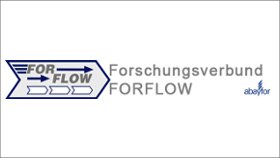FORFLOW
BAVARIAN RESEARCH ASSOCIATION FOR PROCESS- AND WORKFLOW SUPPORT FOR PLANNING AND CONTROLLING PROCEDURES IN THE PRODUCT DEVELOPMENT

1.3 - Purposeful Integration of Product Models into the Product Development Process
Field of work:
1 - Process-related Requirements to the Product ModelsOver the product development process a great variety of product models is created. They serve different purposes like the clarification of the task (list of requirements, model of function), the transparent documentation of solutions (principle sketches, CAD-models) or the providing of information for the analysis of properties (FEM-model, prototype). The product models can be described by several parameters e.g. the degree of concretion, of completion, of consistency and others. The values of these parameters change dynamically over the development process, which is the consequence of an evolutionary change of product models. This dynamic change causes a hindered information flow between the product models, which leads to failures, many changes of the design and iterations in the development process. To cope with the variety of product models and the aggravated information flow between the product models, the objective of this project is the context oriented, purposeful integration of product models into the product development process. Especially the parameter degree of concretion of the product will serve the classification and diversification of product models. The value of the parameters allows the classification of the models into a semantic space as indicated in figure 1 (see below)). Therefore, a geometric closeness to each other and the development process emerges. This enables a relation of product models to process steps, which are dynamic because of their dependence from the value of the parameters. Furthermore, the development of a consistent description method, which includes the mentioned parameters amongst others, is essential to reach this objective. The description method defines the structure of a set, which consists of product models as single modules. A connection between the design situation and the product models allows the integration into the development process and workflow. Therein it is not aimed on the development of a new integrated product model. In fact, the product models are connected semantically and logically, whereas the used product models are existing product models actually used in practice. This addresses the need for a practical solution approach, since the project focuses on existing data and information.



